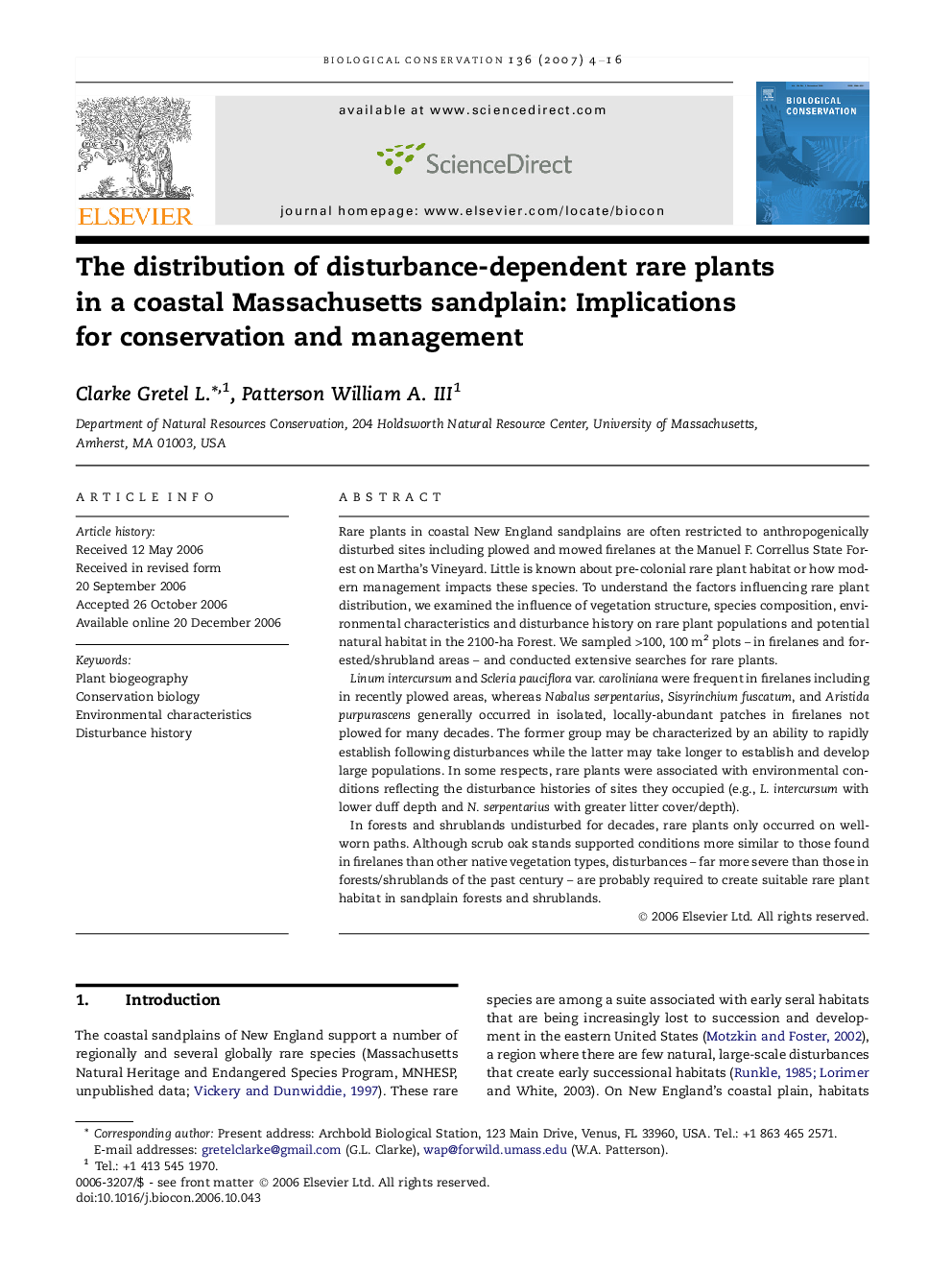| Article ID | Journal | Published Year | Pages | File Type |
|---|---|---|---|---|
| 4387116 | Biological Conservation | 2007 | 13 Pages |
Rare plants in coastal New England sandplains are often restricted to anthropogenically disturbed sites including plowed and mowed firelanes at the Manuel F. Correllus State Forest on Martha’s Vineyard. Little is known about pre-colonial rare plant habitat or how modern management impacts these species. To understand the factors influencing rare plant distribution, we examined the influence of vegetation structure, species composition, environmental characteristics and disturbance history on rare plant populations and potential natural habitat in the 2100-ha Forest. We sampled >100, 100 m2 plots – in firelanes and forested/shrubland areas – and conducted extensive searches for rare plants.Linum intercursum and Scleria pauciflora var. caroliniana were frequent in firelanes including in recently plowed areas, whereas Nabalus serpentarius, Sisyrinchium fuscatum, and Aristida purpurascens generally occurred in isolated, locally-abundant patches in firelanes not plowed for many decades. The former group may be characterized by an ability to rapidly establish following disturbances while the latter may take longer to establish and develop large populations. In some respects, rare plants were associated with environmental conditions reflecting the disturbance histories of sites they occupied (e.g., L. intercursum with lower duff depth and N. serpentarius with greater litter cover/depth).In forests and shrublands undisturbed for decades, rare plants only occurred on well-worn paths. Although scrub oak stands supported conditions more similar to those found in firelanes than other native vegetation types, disturbances – far more severe than those in forests/shrublands of the past century – are probably required to create suitable rare plant habitat in sandplain forests and shrublands.
